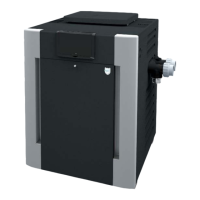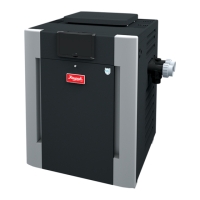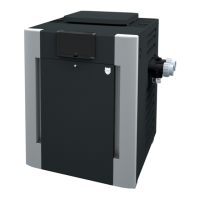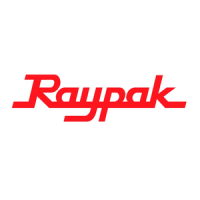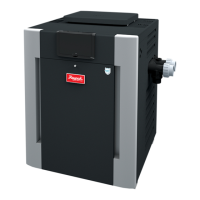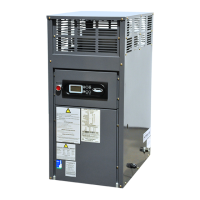General
Appliance Categories
Heaters are divided into four categories based on the
pressure produced in the exhaust and the likelihood of
condensate production in the vent.
Category I – A heater which operates with a non-pos-
itive vent static pressure and with a vent gas tempera-
ture that avoids excessive condensate production in
the vent.
Category II – A heater which operates with a non-pos-
itive vent static pressure and with a vent gas tempera-
ture that may cause excessive condensate production
in the vent.
CAUTION: Proper installation of flue venting is
critical for the safe and efficient operation of the
heater.
NOTE: For additional information on appliance
categorization, see appropriate ANSI Z21 Standard
and the NFGC (U.S.), or B149 (Canada), or
applicable provisions of local building codes.
WARNING: Contact the manufacturer of the vent
material if there is any question about the appliance
categorization and suitability of a vent material for
application on a Category III or IV vent system.
Using improper venting materials can result in
personal injury, death or property damage.
VENTING
Venting Category Requirements
Combustion
Air Supply
Exhaust
Configuration
Heater Venting
Category
Certified
Materials
Combustion Air
Inlet Material
From Inside Building
(Non-Direct Venting)
Vertical
Venting
I
B-Vent
Equivalent
Horizontal Through-
the-Wall Venting
III
Stainless Steel
AL29-4C
From Outside Building
(Direct Venting)
Vertical
Venting
I
B-Vent
Equivalent
Galvanized Steel
PVC
ABS
CPVC
Horizontal Through-
the-Wall Venting
III
Stainless Steel
AL29-4C
Category III – A heater which operates with a positive
vent pressure and with a vent gas temperature that
avoids excessive condensate production in the vent.
Category IV – A heater which operates with a positive
vent pressure and with a vent gas temperature that
may cause excessive condensate production in the
vent.
See the table below for appliance category require-
ments.
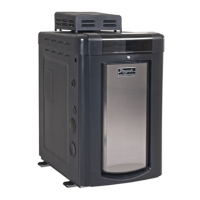
